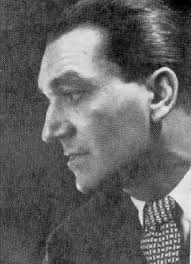 Born in 1905 in Prague, Vladimir Holan was a Czechoslovakian poet noted for his abstract language and dark visions of the world. He spent much of his childhood outside the capital in the small town of Podoli where he would walk three miles to school every day to be instructed at an Augustan convent.
Born in 1905 in Prague, Vladimir Holan was a Czechoslovakian poet noted for his abstract language and dark visions of the world. He spent much of his childhood outside the capital in the small town of Podoli where he would walk three miles to school every day to be instructed at an Augustan convent.
The family returned to Prague when Holan was 14 and he was quickly enrolled in school but found no interest in the maths and science subjects that were mostly taught there. Instead, he began to take an interest in and write poetry, some of which he managed to get published in a local magazine.
After graduating from high school, Holan took a course in law before working, without much enthusiasm, as a clerk at an insurance company. He continued to write, however, and in 1926 published his first book. It wasn’t until he completed the work Breezing in 1936 that he considered he had written something that was of literary worth. Indeed, it was the only one of his books to be reviewed by famous Czech critic František Šalda who hailed it as the work of a bold new voice and compared him to the French poet Mallarme.
The myth of Holan as the best poet to have come out of Czechoslovakia grew over the next few years, and when he began to reveal his political perspective, writing a number of anti-fascist poems in the late 30s, he became more popular with the general public. Poems written at this time included The Replay to France and September 1938 and, as war came to Europe and the rest of the world, he published works such as The Dream.

The dark turn in his poetry became more obvious when he published a number of poems during the war that reflected the humiliation of the nation. Towards the end of the conflict, Holan renounced his Catholic faith and joined the Communist Party, initially writing poems in praise of the Red Army and the Soviet Union.
His attraction to communism though was short lived and he retreated into solitude at his home in Prague, writing but publishing little during the 50s. It wasn’t until the beginning of the 1960s that he began to publish those works he had produced in the last decade.
The most successful of these was A Night with Hamlet that came out in 1962 and achieved wide public acclaim across the whole of Europe. This long, often obscure, poem along with his shorter, lyric reflections and the fact that he lived almost as a recluse, helped to build his myth in those countries outside the Eastern Block.

The late 60s brought a number of awards for his work and he was made a National Artist and also nominated for the Nobel Prize for Literature. Holan continued to write short lyric poetry through the beginning of the 1970s until his only daughter died in 1977. He stopped writing completely after that and died himself in 1980 at the age of 75, his body buried at Olšany Cemetery.

